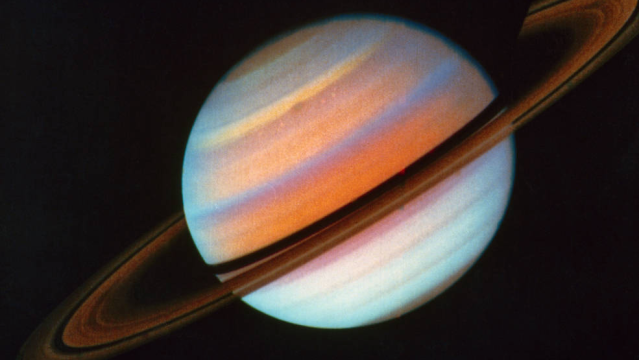Image Cache: The universe is very good at making us feel both extremely insignificant and lucky enough to be part of something huge. No missions have made this clearer than NASA’s Voyager spacecraft, which have been exploring the cosmos for 40 years. Yesterday, Voyager 1 officially turned the big 4-0, which it celebrated by cruising through interstellar space.
Image: NASA/Voyager 1
Browse through the cool photos, animations and diagrams in Gizmodo’s Image Cache here.
Together, the Voyager missions have ventured past Jupiter, Saturn, the ice giants Neptune and Uranus, and even crossed the termination shock into the outskirts of the Sun’s influence. These triumphant chunks of metal are still sending us back all sorts of scientific information and will continue to do so until they can’t/are swarmed by aliens.
Besides this video of someone playing “Despacito” on two calculators, Voyagers 1 and 2 represent the peak of human achievement. For Voyager 1‘s anniversary — and Voyager 2’s belated, it launched on August 20 — we’ve compiled their greatest snapshots from the final frontier:
Saturn’s C and B Rings on Display. Taken 23 August 1981
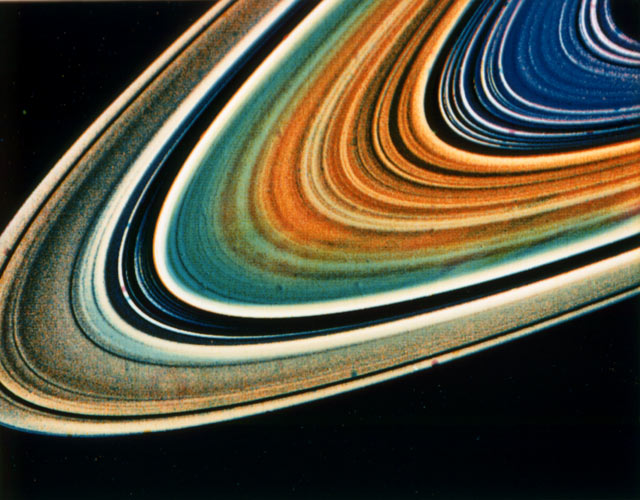
Image: NASA
Voyager 2 took this incredible shot during its sojourn in the Saturnian system, while it was about 2.7 million km from the planet.
Uranus in true and false colour. Taken 17 January 1986.
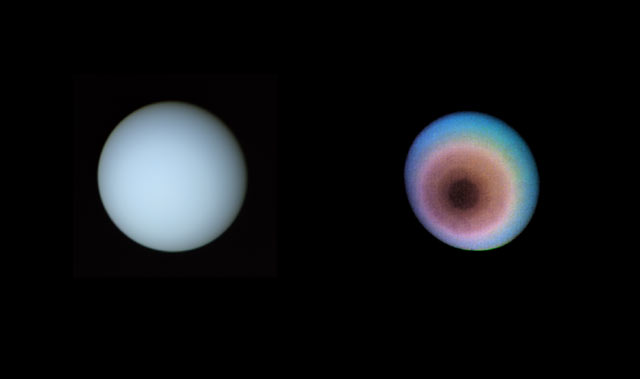
Image: NASA
According to NASA, Voyager 2 made its closest approach to Uranus a few days after this image was taken, on 24 January 1986. The spacecraft came within 81,500km of Uranus.
Neptune’s Great Dark Spot. Taken in August of 1989.

Image: NASA
Voyager 2 spotted this massive storm that was somewhat similar in size to the Great Red Spot on Jupiter. In 1994, Hubble found that although this storm mysteriously disappeared, a new one had cropped up in the planet’s Northern Hemisphere. Mysterious, enormous storm systems have continued to crop up on Neptune ever since.
Jupiter’s Great Red Spot

Image: NASA
Voyager 1 studied the Jovian system from January to February in 1979, famously capturing the horrifying beauty of a storm known as the Great Red Spot. This massive, hurricane-like weather pattern could fit three Earths inside it.
Saturn and its moons, Tethys and Dione. Taken 3 November 1980.
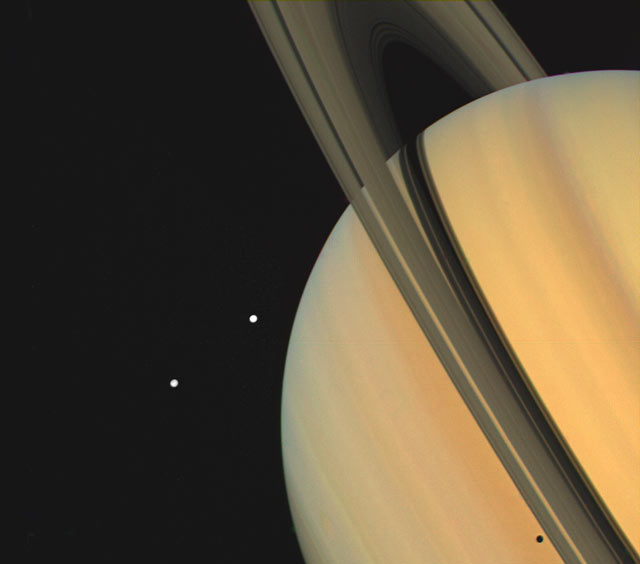
Image: NASA
Voyager 1 arrived in the Saturnian system in November of 1980. It found three new moons on its trip: Prometheus, Pandora, and Atlas.
And of course, the Pale Blue Dot. Taken 14 February 1990 by Voyager 1.
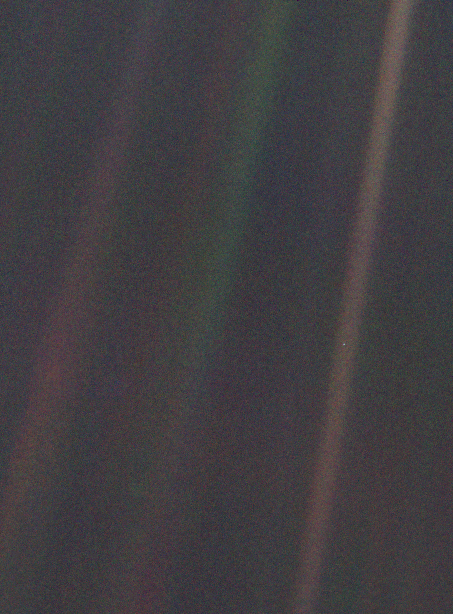
Image: NASA
On Valentine’s Day in 1990, Voyager 1 took this image, now immortalised in Carl Sagan’s 1994 book of the same name: The Pale Blue Dot. At the time, Voyager 1 was 40 AU from the Sun, plunging forward but looking back at us.
After all these years, we’re still that beautiful blue speck — our own little nest in the cosmos.
Ad astra, Voyagers!
